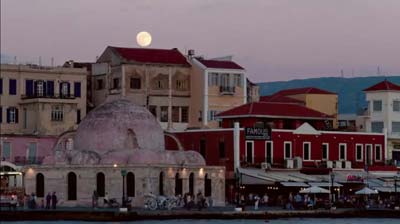Santorini is one of the most visited islands in the world (placed in the top 10 of most visited islands), a destination where tourists come to from all over the world.
They come to admire the cave houses built on cliffs measuring hundreds of meters, the rooftops painted in a blue more intense than the sea, the clear sky and great weather, or the donkeys waiting to carry the tourists from the harbor to the heart of the cities.
The pride of the Greek islands, Santorini is, simply put, a place of contrasts. A place where, during the touristic season (from late April to late October), one must struggle to find a place to hide from the crowd. And when the season ends, more than 80% of the islanders become inlanders and move on the continental Greece, mainily around the big cities of Athens, Salonic, Sparta, Kalamata, etc. Even at the highest peak, during the months of July and August, when the streets and beaches are overcrowded, you can still find places that seem deserted.
More than that, Santorini is a unique place to visit. The tourist visiting these places for the first time is faced with a strange feeling of confusion. It lacks the terms for comparison. With little exceptions (e.g. Cinque Terre, Italy), nothing in the world you have already seen in the world can compare to the sights that Santorini offers.
A very brief history overview
More than 4000 years ago, Santorini had the shape of a circle, more like the northern island of Thassos, until the volcano erupted (around the year 1450 B.C.) and created a tsunami that it is said to have destroyed the Minoic civilization. The former island was shaped to its present form, mainly consisting of the islands of Thira (the Greek word for Santorini), Thirassia, Paleo Kameni (the ancient island) and Nea Kameni (the new island). The latter is so new that it only has existed for 60 years. It actually emerged over night from the sea. Literally. The inhabitants of Santorini woke up one morning to discover a new island that had not existed the previous day.
Attractions
Why does Santorini attract tourists, aside from its past surrounded by millenniums of myths, legends and history?
The answers are so many that it is hard to decide where to start.
- It attracts because of the unique and panoramic sightseeing. It is almost as if you need to catch your breath every time you look around. The images are indeed breathtaking.
- People and churches.
- The inhabitants, whose behavior is as warm and welcoming as the places and the weather.
- The olives in all kinds of shapes and colors.
- And its wines, in a display of more than 35 types, red, white and rose.
- And last but not least, the well known churches and houses for prayer, exceeding 250 in number.
A more appropriate question would be to ask if there is anything that Santorini does not impress with, for I have not found anything that I did not like.
How to get to Santorini
There are two ways to get to Santorini. The fastest one is by air. Santorini has a national airport situated near Kamari village, in the central eastern part of the main island, called Thira (the Greek name) or Santorini. For more details about the airport, visit www.hcaa-eleng.gr/santor.htm.
They offer regular flights from the capital of Greece, Athens, with two main Greek companies, Olympic Airways and Aegean Airlines, as well as charters from many European cities. The flight duration from Athens to Santorini is around 30 minutes. You can also get to Santorini by air from other Greek island such as Rodos (duration 40 minutes) or Crete (duration around 20 minutes). From the airport you can take a bus to Fira (Thira), where you can change to buses for other towns. There are also taxis waiting at the airport and the cost is about 20 euros (they differ according to the destination). They can be negotiated, but remember to have a friendly attitude and to put a smile on your face (it always helps).
The other option to get to Santorini is by sea. Either with a cruise or transport ferry line or with a fast ferry. The difference lies in the amount of time needed to get there and, of course, the price. Once again, there are several places that you can arrive from. Either from other countries than Greece, from the mainland (Athens) or many of the islands. From Athens to Santorini, the duration is around 10 hours, so a night time travel is most recommended (the ferries have 4, 5 or more decks and levels and the places to sleep are not a problem, for there are a lot of chairs that can be turned into a very comfortable bed. If you decide on a cruise ferry, the only place deep enough for such ships to dock is in the harbor of Athinios.














































March 23, 2016
Hi Chris! I am so happy that you feel we captured the spirit of Santorini. That means a lot to us coming from someone that lives in Greece!